PIERCE, Franklin. Partly printed document signed ("Franklin Pierce") as President, authorizing the Secretary of State to affix the seal of the United States to "the Ratification of the original Treaty with Mexico," Washington, D.C., 29 June 1854. 1 page, 4to, 10 3/8 x 8 in., remnants of old mount on integral blank, very minor spotting . APPROVING THE GADSDEN PURCHASE The first half of the 19th century constituted an era of unprecedented economic development coupled with vast improvements in the transport of goods and passengers, particularly by the expansion of the railroad network. Where the roads went, economic growth was certain to follow. By 1850, there was increasing pressure to connect the rapidly expanding state of California with eastern markets. A transcontinental railroad would have obvious benefits, and politicians battled over the relative merits of southern and northen proposed routes. Seeking an opportunity to promote a transcontinental railroad that would benefit the South, Secretary of War Jefferson Davis encouraged Franklin Pierce to order the survey of a tract of largely desert land belonging to Mexico (along the southern border of the current states of Arizona and New Mexico) as a potential rail route. James Gadsden (1788-1858), a South Carolina railroad promoter, was appointed Minister to Mexico and immediately entered into negotiations to purchase the 55,000 square miles of territory. Mexican president Santa Anna agreed to accept 15 million dollars in return for the Gadsden Purchase. Sectionalism again came into play. Northern politicians disputed the acquisition, arguing that the land would be used to promote the expansion of slavery and agreed to the treaty only after reducing the territory by 9000 square miles. Here, Franklin Pierce orders his Secretary of State, William Marcy, to affix the seal to "the Ratification of the original Treaty with Mexico (as amended by the Senate of the United States) signed in the City of Mexico on the 30th Dec r . last." The Gadsden Purchase marked the completion of the present continental boundaries of the 48 original states. Ironically, the first transcontinental railroad did not pass through the newly acquired strip of land. Shortly after the purchase was completed, Stephen Douglas proposed a bill to organize the Kansas and Nebraska territories, a region which well-suited for a northern transcontinental route. In order to assure its passage, Douglas promised to make no restrictions on the introduction of slavery into Kansas, igniting an even more inflammatory sectional debate that would eventually lead to civil war. Provenance: Kenneth Rendell, 1971.
PIERCE, Franklin. Partly printed document signed ("Franklin Pierce") as President, authorizing the Secretary of State to affix the seal of the United States to "the Ratification of the original Treaty with Mexico," Washington, D.C., 29 June 1854. 1 page, 4to, 10 3/8 x 8 in., remnants of old mount on integral blank, very minor spotting . APPROVING THE GADSDEN PURCHASE The first half of the 19th century constituted an era of unprecedented economic development coupled with vast improvements in the transport of goods and passengers, particularly by the expansion of the railroad network. Where the roads went, economic growth was certain to follow. By 1850, there was increasing pressure to connect the rapidly expanding state of California with eastern markets. A transcontinental railroad would have obvious benefits, and politicians battled over the relative merits of southern and northen proposed routes. Seeking an opportunity to promote a transcontinental railroad that would benefit the South, Secretary of War Jefferson Davis encouraged Franklin Pierce to order the survey of a tract of largely desert land belonging to Mexico (along the southern border of the current states of Arizona and New Mexico) as a potential rail route. James Gadsden (1788-1858), a South Carolina railroad promoter, was appointed Minister to Mexico and immediately entered into negotiations to purchase the 55,000 square miles of territory. Mexican president Santa Anna agreed to accept 15 million dollars in return for the Gadsden Purchase. Sectionalism again came into play. Northern politicians disputed the acquisition, arguing that the land would be used to promote the expansion of slavery and agreed to the treaty only after reducing the territory by 9000 square miles. Here, Franklin Pierce orders his Secretary of State, William Marcy, to affix the seal to "the Ratification of the original Treaty with Mexico (as amended by the Senate of the United States) signed in the City of Mexico on the 30th Dec r . last." The Gadsden Purchase marked the completion of the present continental boundaries of the 48 original states. Ironically, the first transcontinental railroad did not pass through the newly acquired strip of land. Shortly after the purchase was completed, Stephen Douglas proposed a bill to organize the Kansas and Nebraska territories, a region which well-suited for a northern transcontinental route. In order to assure its passage, Douglas promised to make no restrictions on the introduction of slavery into Kansas, igniting an even more inflammatory sectional debate that would eventually lead to civil war. Provenance: Kenneth Rendell, 1971.








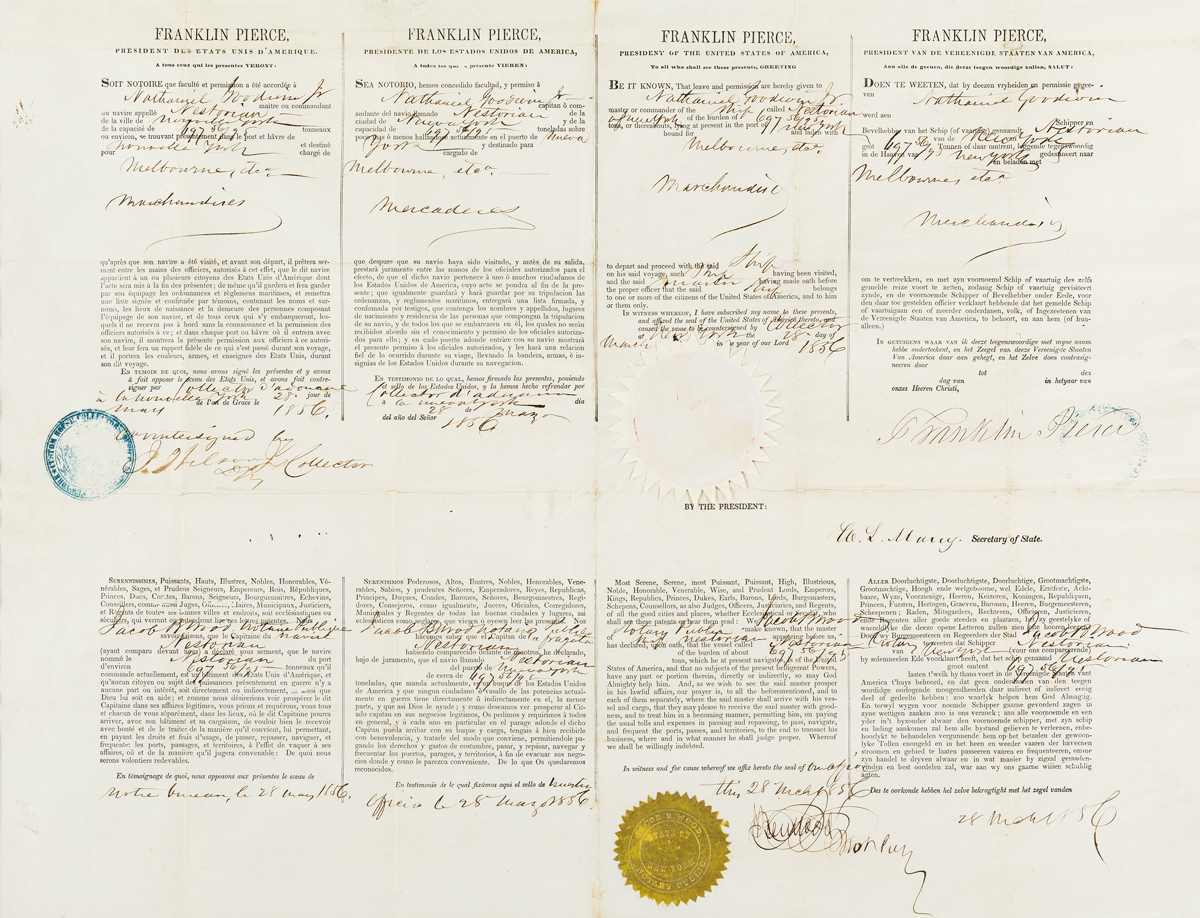

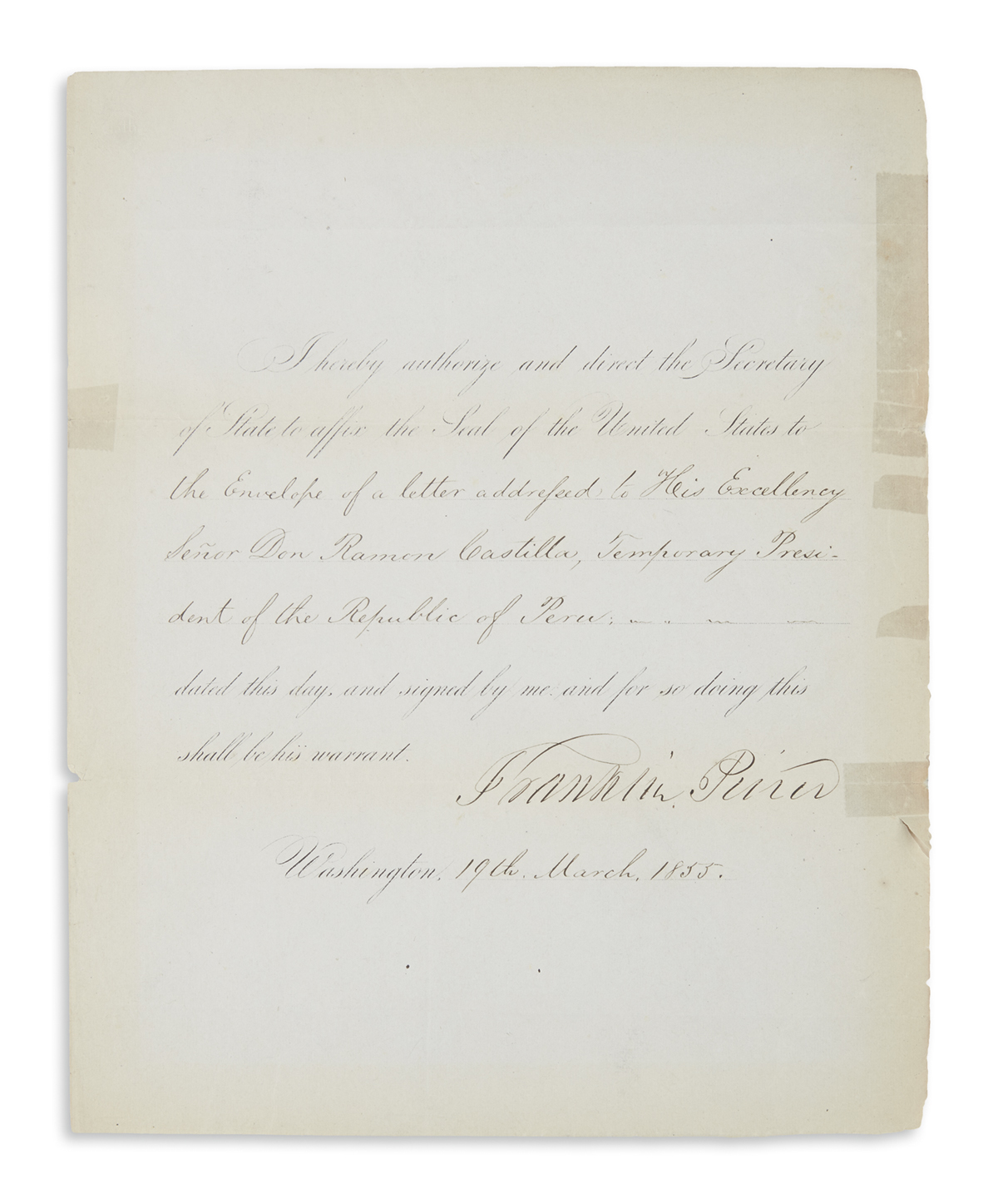
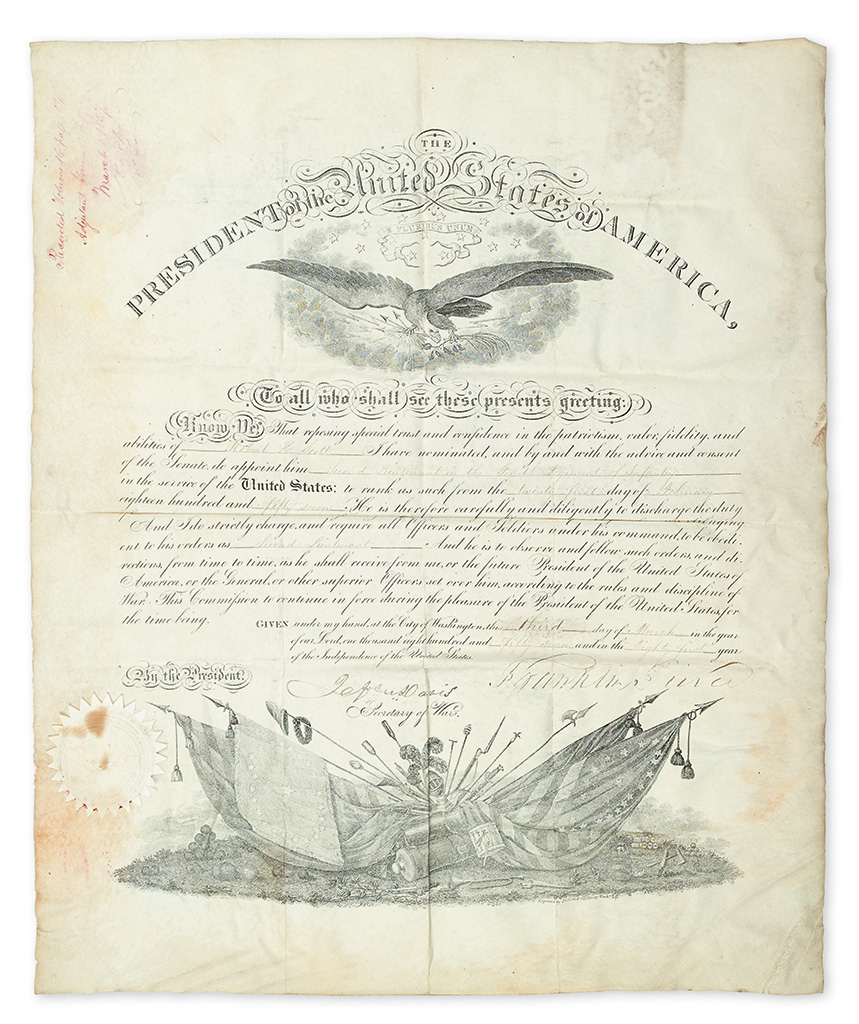
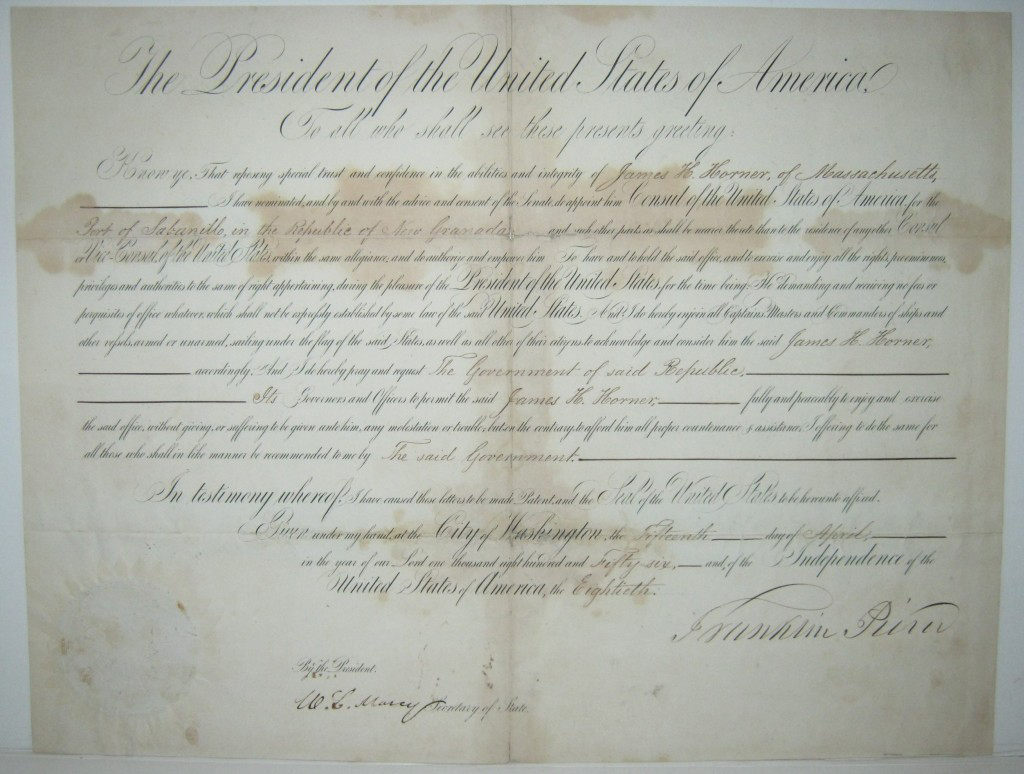
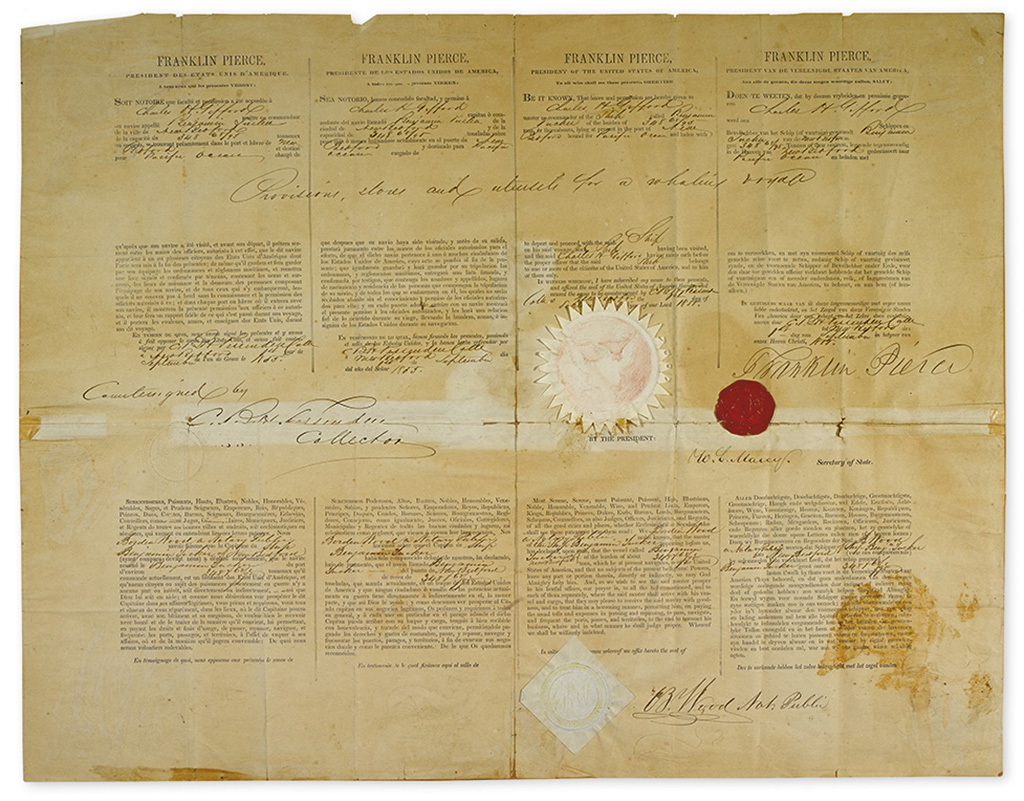
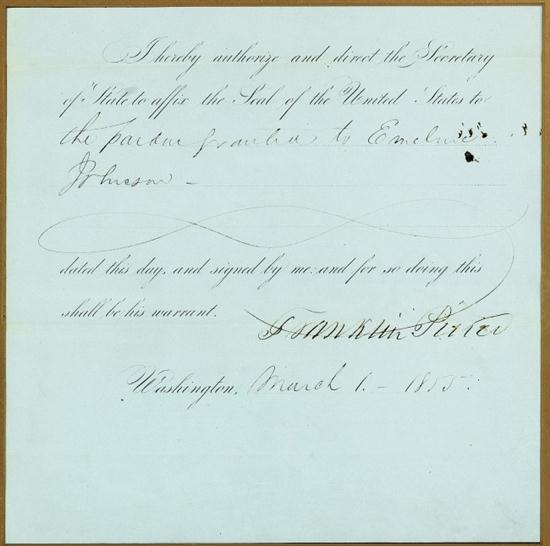
Testen Sie LotSearch und seine Premium-Features 7 Tage - ohne Kosten!
Lassen Sie sich automatisch über neue Objekte in kommenden Auktionen benachrichtigen.
Suchauftrag anlegen